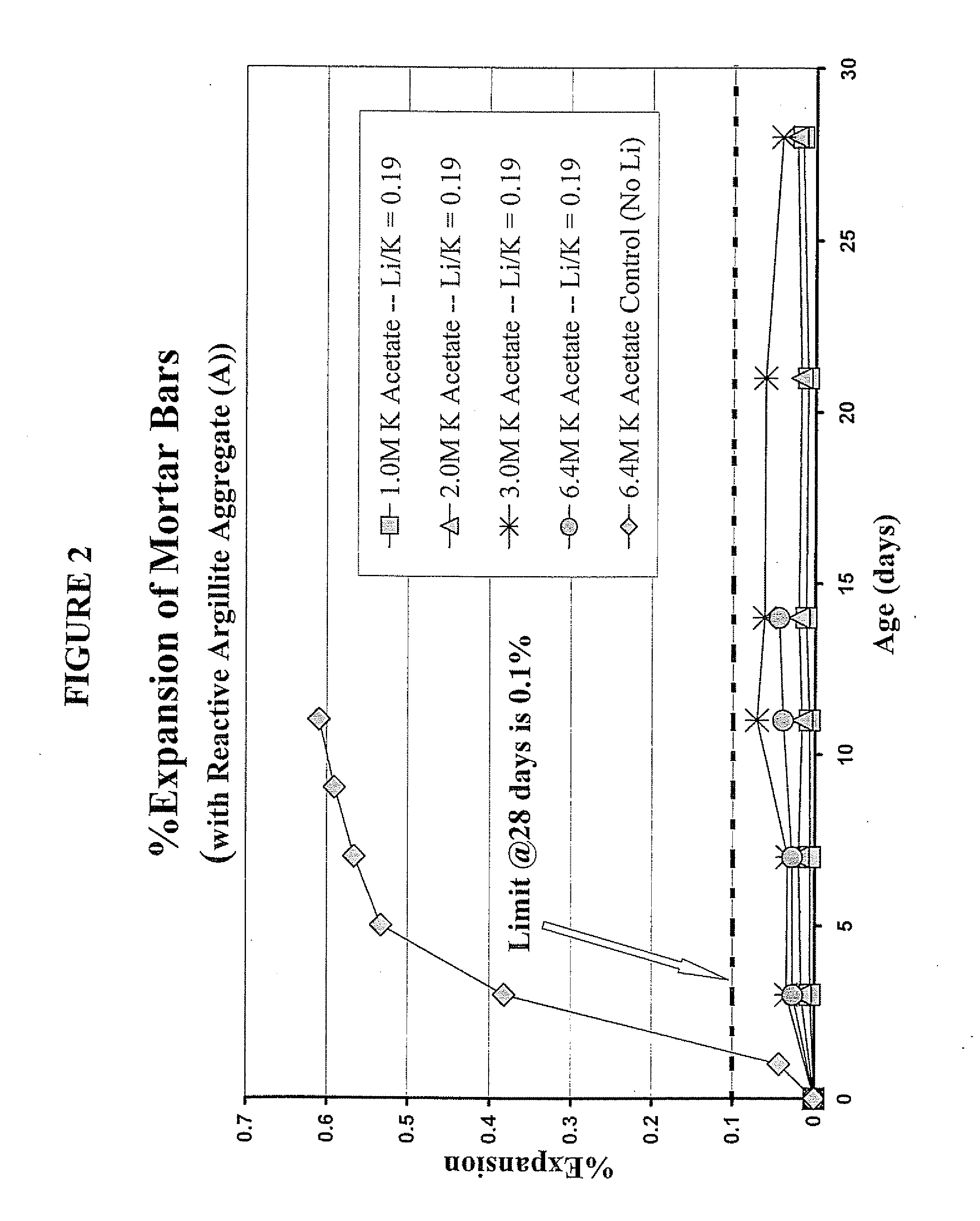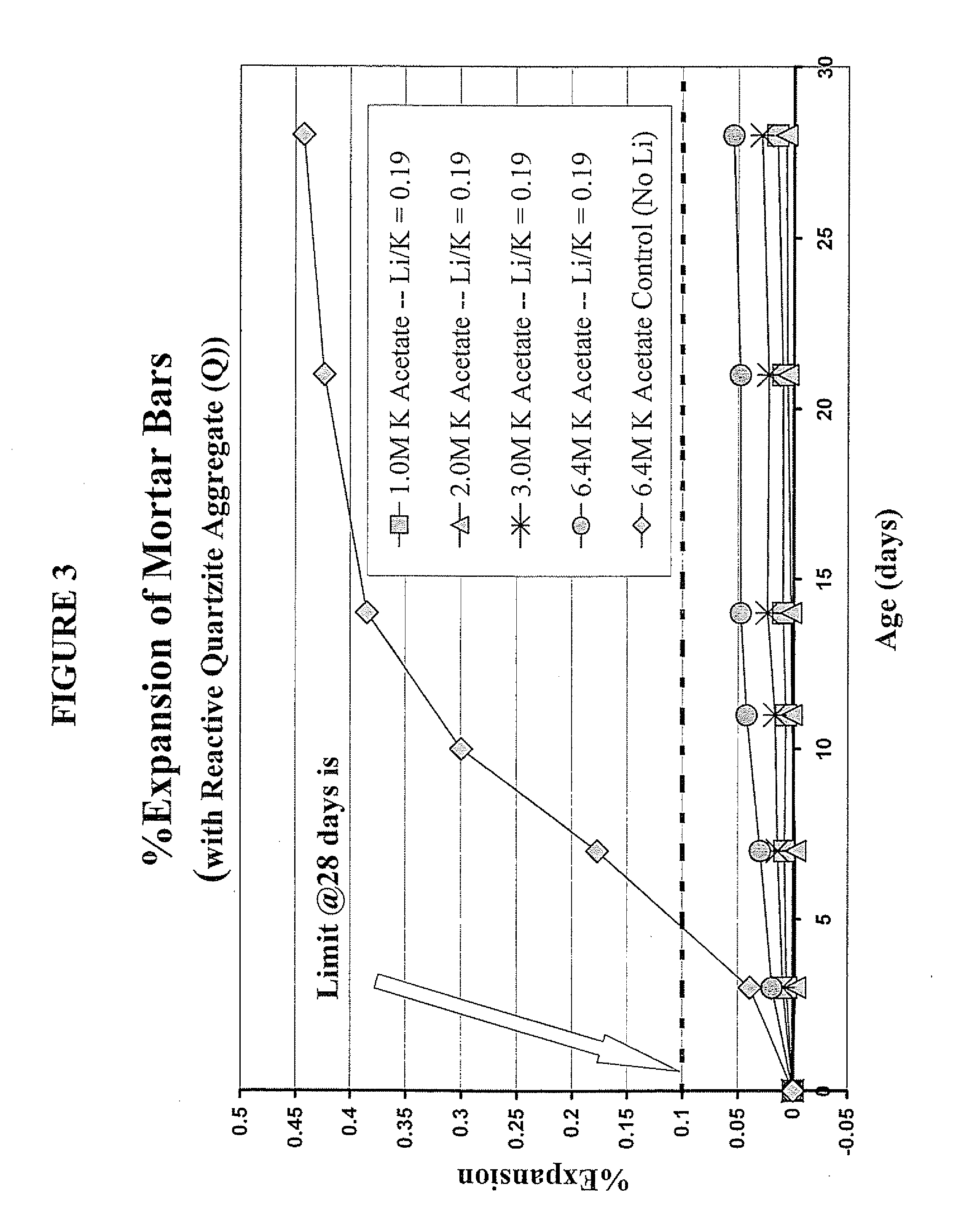Deicing composition
a composition and composition technology, applied in the field of deicing compositions, can solve the problems of significant traffic and safety problems, corrosive metals like iron, copper, aluminum, chlorides can be harmful to the environment, etc., and achieve the effect of moderate asr-aggravating effects
- Summary
- Abstract
- Description
- Claims
- Application Information
AI Technical Summary
Benefits of technology
Problems solved by technology
Method used
Image
Examples
examples
[0031] To demonstrate the effectiveness of the lithium portion of the deicer composition, the following experiments were conducted Mortars incorporating four different aggregates were cast into ASTM C 1260-type bars using ASTM C150 Type 1, high alkali (0.82% Na2Oeq) cement. The aggregate types were a limestone (“L”), a rhyollite (“R”), an argillite (“A”), and a quartzite (“Q”), and all have demonstrated deleterious ASR reactions in actual concrete structures in the field. Controls of 50 percent (6.4M) potassium acetate were used, and the mortar bars were stored in these solutions, and duplicates in the solutions described below, at 80° C. FIGS. 1-4 show the percent expansion versus age data for the mortar bars stored in the various concentrates (1M, 2M, 3M, 6.4M) of potassium acetate and with solutions incorporating lithium nitrate at a molar ratio of Li / K of 0.19. FIGS. 5-7 show the percent expansion versus age data for the mortar bars stored in the various concentrates (1M, 2M, 3M...
PUM
 Login to View More
Login to View More Abstract
Description
Claims
Application Information
 Login to View More
Login to View More - R&D
- Intellectual Property
- Life Sciences
- Materials
- Tech Scout
- Unparalleled Data Quality
- Higher Quality Content
- 60% Fewer Hallucinations
Browse by: Latest US Patents, China's latest patents, Technical Efficacy Thesaurus, Application Domain, Technology Topic, Popular Technical Reports.
© 2025 PatSnap. All rights reserved.Legal|Privacy policy|Modern Slavery Act Transparency Statement|Sitemap|About US| Contact US: help@patsnap.com



